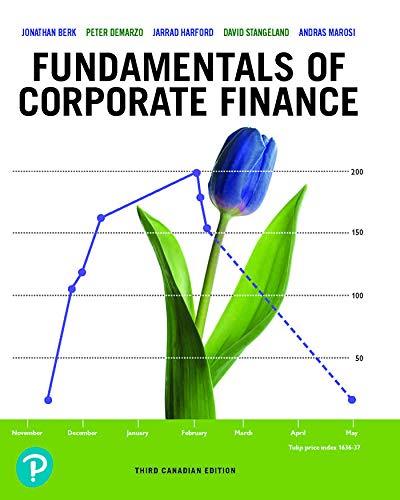Question
Coca Cola, the iconic American soda maker, has long been among the most international of enterprises. The company made its first move outside the United
Coca Cola, the iconic American soda maker, has long been among the most international of enterprises. The company made its first move outside the United States in 1902, when it entered Cuba. By 1929, Coke was marketed in 76 countries around the world. In World War II, Coke struck a deal to supply the U.S. military with Coca Cola, wherever in the world it went. During this era, the company built 63 bottling plants around the world. Its global push continued after the war, fueled in part by the belief that the U.S. market would eventually reach maturity and by the perception that huge growth opportunities lay overseas. Today more than 59,000 of the companys 71,000 employees are located in 200 countries outside of the United States, and over 70 percent of Cokes case volume is in international markets. Until the 1980s, Cokes strategy was one of considerable localization. Local operations were granted a high degree of independence to manage their own operations as they saw fit. This all changed in the 1980s and 1990s under the leadership of Roberto Goizueta, a talented Cuba immigrant who became the CEO of Coke in 1981. Goizueta placed renewed emphasis on Cokes flagship brands, which were extended with the introduction of Diet Coke, Cherry Coke, and the like. His prime belief was that the main difference between the United States and international markets was the lower level of penetration in the latter, where consumption per capita of colas was only 10 to 15 percent of U.S. consumption. Goizueta pushed Coke to become a global company, centralizing a great deal of management and marketing activities at the corporate headquarters in Atlanta, focusing on core brands, and taking equity stakes in foreign bottlers so the company could exert more strategic control over them. This one-size-fits-all strategy was built around standardization and the realization of economies of scale by, for example, using the same advertising message worldwide. Goizuetas global strategy was adopted by his successor, Douglas Ivester, but by the late 1990s the drive towards a one-size-fits-all strategy was running out of steam, as smaller, more nimble local competitors marketing local beverages began to halt the Coke growth engine. With Coke failing to hit its financial targets for the first time in a generation, Ivester resigned in 2000 and was replaced by Douglas Daft. Daft instituted a 180-degree shift in strategy. Dafts belief was that Coke needed to put more power back in the hands of local country managers. He thought that strategy, product development, and marketing should be tailored to local needs. He laid off 6,000 employees, many of them in Atlanta, and granted country managers much greater autonomy. Moreover, in a striking move for a marketing company, he announced that the company would stop making global advertisements, and he placed advertising budgets and control over creative content back in the hands of country managers. Ivesters move was in part influenced by the experience of Coke in Japan, the companys second most profitable market, where the best-selling Coca-Cola product is not a carbonated beverage, but a canned cold coffee drink, Georgia Coffee, that is sold in vending machines. The Japanese experience seemed to signal that products should be customized to local tastes and preferences, and that Coke would do well to decentralize more decision-making authority to local managers. However, the shift toward localization didnt produce the growth that had been expected, and by 2002 the pendulum was swinging back toward more central coordination, with Atlanta exercising oversight over marketing and product development in different nations. But this time it was not the one-size-fits-all ethos of the Goizueta era. Under the leadership of Neville Isdell, who became CEO in March 2004, Coke now reviews and guides local marketing and product development, but has adopted the belief that strategy, including pricing, product offerings, and marketing message, should be varied from market to market to match local conditions. Isdells position, in other words, represents a midpoint between the strategy of Goizueta, and that of Daft. Moreover, Isdell has stressed the importance of leveraging good ideas across nations. A case in point is Georgia Coffee. Having seen the success of this beverage in Japan, in October 2007 Coke entered into a strategic alliance with Illycaffe, one of Italys premier coffee makers, to build a global franchise for canned or bottled cold coffee beverages. Similarly, in 2003 the Coke subsidiary in China developed a low-cost noncarbonated orange drink that has rapidly become one of the best-selling drinks in that nation. Seeing the potential of the drink, Coke is now rolling it out in other Asian countries. It has been a huge hit in Thailand, where it was launched in 2005, and seems to be gaining traction in India, where it was launched in 2007.
2. What were the limitations of Goizuetas strategy that persuaded his successor, Daft, to shift away from it? What was Daft trying to achieve? Dafts strategy also did not produce the desired results. Why do you think this was the case?
Step by Step Solution
There are 3 Steps involved in it
Step: 1

Get Instant Access to Expert-Tailored Solutions
See step-by-step solutions with expert insights and AI powered tools for academic success
Step: 2

Step: 3

Ace Your Homework with AI
Get the answers you need in no time with our AI-driven, step-by-step assistance
Get Started


